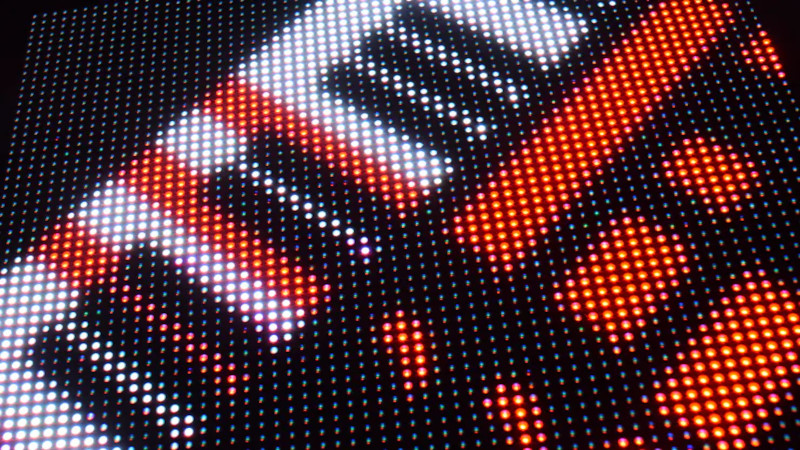Since the high-definition era, screens with many millions of pixels have become commonplace. Resolutions have soared into the stratosphere, and media has never looked clearer or crisper. However, [gatoninja236] decided to go the other way with this build – an LED matrix capable of playing Youtube videos.
The execution is simple. A Raspberry Pi 3, with the help of a Python script, downloads a Youtube video. It then runs this through OpenCV, which parses the video frames, downconverting them to suit a 64×64 pixel display. Then, it’s a simple matter of clocking out the data to the 64×64 RGB LED matrix attached to the Raspberry Pi’s IO pins, where the video is displayed in all its low-resolution glory.
Is it a particularly useful project? No. That doesn’t mean it’s not without value however; it teaches useful skills in both working with LED displays and video data scraped from the Internet. If you simply must have more pixels, though, this ping pong video wall might be more to your liking. Video after the break.
















That could have been a hard coded demo.
Come on!
Give us at least Marvin the Martian!
whaaat? no Never Gonna Give You Up??
You know it’s 2021 when Hackaday calls 64×64 “low resolution”.
not so long ago, 24×24 was “high resolution” …
In what decade was a 24×24 display “high resolution?”
I can’t even think of any CRTs being that poor.
I’d like to know too, even the Casio fx-7000g was 96 × 64 pixels back in 1985, and I don’t recall anyone ever calling it high res, even back then!
Well it wasn’t the 1920s, the first transmitted TV pics were 30 lines.
I skipped through the video looking for it too… I don’t understand how this happened
been there, done that :-)
(196 x 96)
https://www.youtube.com/watch?v=UAi9DVd9Xxs
I gotchu fren
https://twitter.com/StripeyType/status/1283910170486153224
You can do this also with VLC and Flaschen-Taschen:
https://twitter.com/StripeyType/status/1283910170486153224
Every time someone try to duplicate lofi, the “solution” always ended up more expensive than the current tech on the market. You can do this with ultra low tech with optically – a privacy glass.
https://www.awesomeinventions.com/wp-content/uploads/2019/10/real-life-pixel-cats-3.jpg
I wouldn’t say the project was about duplicating lofi – there’s a big difference between a low resolution display and an LED matrix – primarily brightness. There’s a reason concerts use addressable LED matrices of various sizes and shapes for visual effects rather than stitching a bunch of LCD TVs together. While there’s not much point of outputting a movie or television show to such a low resolution display, there is a lot of value in being able to take a video file of any resolution, and be able to automatically convert and display on an LED matrix. YouTube is loaded with ambient effect videos not to mention there are tons of music visualization apps that can output cool videos. Being able to bypass the need for specific LED controller software is a pretty slick workflow for getting any pattern/effect video straight to the LED matrix.
Also, the LED matrix doesnt have to be square or anything close to a square, so there isnt really any “current tech on the market” for say, a banner type display that’s 10x long as it is tall.
Umm, just use an led TV.
It’s pretty funny that it’s cheaper and simpler to do this with a HDMI display and some funky glass on top, than to actually make/control an array of RGB LEDs :) Crazy times.